-
 Bitcoin
Bitcoin $115800
-2.47% -
 Ethereum
Ethereum $3690
1.19% -
 XRP
XRP $3.105
-1.91% -
 Tether USDt
Tether USDt $0.9999
-0.07% -
 BNB
BNB $771.0
0.19% -
 Solana
Solana $179.9
-3.54% -
 USDC
USDC $0.9998
-0.03% -
 Dogecoin
Dogecoin $0.2291
-3.40% -
 TRON
TRON $0.3140
0.81% -
 Cardano
Cardano $0.8007
-1.24% -
 Hyperliquid
Hyperliquid $42.92
-0.44% -
 Stellar
Stellar $0.4212
-2.16% -
 Sui
Sui $3.730
0.03% -
 Chainlink
Chainlink $18.06
0.03% -
 Bitcoin Cash
Bitcoin Cash $546.6
5.08% -
 Hedera
Hedera $0.2438
0.55% -
 Avalanche
Avalanche $23.57
-0.81% -
 Litecoin
Litecoin $114.2
1.04% -
 UNUS SED LEO
UNUS SED LEO $8.970
-0.35% -
 Shiba Inu
Shiba Inu $0.00001363
-0.16% -
 Toncoin
Toncoin $3.136
-0.89% -
 Ethena USDe
Ethena USDe $1.001
-0.04% -
 Uniswap
Uniswap $10.30
1.42% -
 Polkadot
Polkadot $4.013
-0.06% -
 Monero
Monero $324.8
0.87% -
 Dai
Dai $0.9999
-0.04% -
 Bitget Token
Bitget Token $4.509
-1.38% -
 Pepe
Pepe $0.00001226
-2.60% -
 Aave
Aave $291.8
1.34% -
 Cronos
Cronos $0.1294
2.19%
Is the continuous overbought J value of the KDJ indicator a continuation of strength or a precursor to a correction?
A persistently overbought KDJ J value above 100 in crypto often signals strong momentum, not immediate reversal—especially in bull markets like Bitcoin’s run to $70K, where price and volume confirm trend strength.
Jul 24, 2025 at 03:21 pm
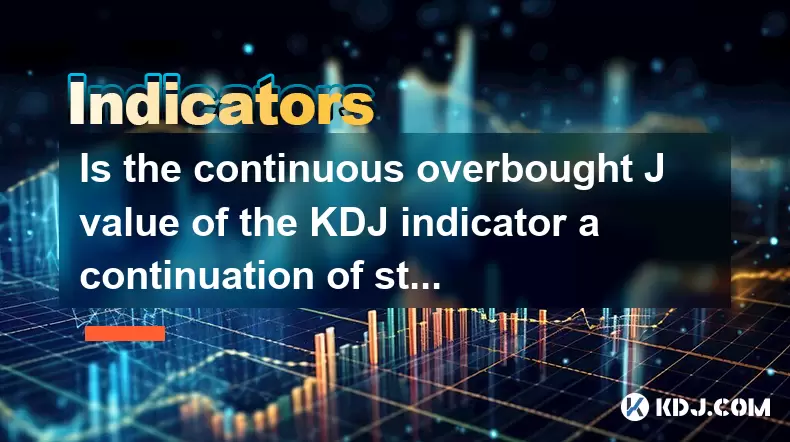
Understanding the KDJ Indicator in Cryptocurrency Trading
The KDJ indicator is a momentum oscillator widely used in cryptocurrency trading to assess overbought and oversold conditions. It consists of three lines: the %K line, the %D line, and the %J line. The %K line reflects the current closing price relative to the price range over a specific period, typically 9 periods. The %D line is a moving average of the %K line, usually smoothed over 3 periods. The %J line, calculated as 3 × %K – 2 × %D, is the most sensitive and volatile of the three, often used to identify extreme market conditions.
In the context of digital assets, where volatility is significantly higher than in traditional markets, the KDJ indicator can provide early signals about potential trend reversals or continuations. When the J value remains continuously above 100, it is generally considered overbought. However, interpreting this condition requires a nuanced understanding, as prolonged overbought readings do not always lead to immediate corrections in strong trending markets.
What Does a Continuously Overbought J Value Indicate?
A persistently high J value, especially one that stays above 100 for multiple periods, suggests that the market is experiencing strong buying pressure. In cryptocurrency markets, such conditions are common during bullish rallies driven by FOMO (fear of missing out), positive news cycles, or macroeconomic catalysts like ETF approvals or halving events.
While an overbought signal traditionally warns of an impending pullback, in a strong uptrend, the J line can remain elevated without triggering a reversal. This phenomenon is particularly evident in assets like Bitcoin or Ethereum during bull runs, where momentum traders continue to push prices higher despite technical indicators showing overbought conditions.
Therefore, a continuously overbought J value may reflect ongoing strength rather than imminent weakness. The key lies in analyzing whether the price action confirms the momentum—such as higher highs and higher lows—alongside increasing volume.
Differentiating Between Strength and Exhaustion
To determine whether a high J value signals strength or exhaustion, traders should incorporate price structure analysis and volume confirmation. Consider the following factors:
- Price Momentum: If the cryptocurrency is making new highs with strong upward candles and minimal pullbacks, the overbought J value likely reflects strength. Look for consecutive green candles on the 4-hour or daily chart.
- Volume Trends: Rising volume during price advances supports the validity of the trend. A decline in volume while the J value remains high may suggest weakening participation and potential exhaustion.
- Divergence Detection: Check for bearish divergence between the J line and price. If the price makes a new high but the J value fails to exceed its prior peak, this could signal weakening momentum and a possible correction.
For example, if Bitcoin reaches $70,000 with the J value at 105, but the next rally to $71,000 sees the J value only reaching 102, this lower high in the J line despite a higher price indicates divergence and caution.
How to Use the KDJ Indicator with Other Tools
Relying solely on the KDJ indicator can lead to misleading signals, especially in trending crypto markets. To enhance accuracy, combine it with complementary tools:
- Moving Averages: Use the 50-day and 200-day EMAs to identify the overall trend. If the price is above both, the overbought J value is more likely to reflect strength.
- RSI Confirmation: Compare the KDJ’s J line with the Relative Strength Index (RSI). If both RSI and J are overbought, the signal gains strength. However, if RSI shows divergence while J remains high, it increases the likelihood of a correction.
- Support and Resistance Levels: Identify key resistance zones. If the price approaches a historical resistance level while the J value is overbought, the probability of a pullback increases.
- Bollinger Bands: Observe whether the price is riding the upper Bollinger Band. Sustained movement along the upper band with high J values supports trend continuation.
For instance, on the Binance BTC/USDT chart, set up KDJ (9,3,3), RSI (14), and Bollinger Bands (20,2). Monitor how these indicators align when the J value exceeds 100.
Step-by-Step Guide to Monitoring the J Value on Trading Platforms
To effectively track the J value and interpret its implications, follow this procedure on a platform like TradingView or Binance:
- Open the charting interface and select the cryptocurrency pair of interest (e.g., ETH/USDT).
- Click on the "Indicators" button and search for "KDJ". Apply the default settings (9,3,3) or adjust based on your strategy.
- Locate the J line in the KDJ sub-window. Observe its value and trend over the last 5–10 candlesticks.
- Enable the "Show Value" option to display real-time J values on the chart.
- Add a horizontal line at 100 to easily identify overbought conditions.
- Overlay volume and RSI indicators to cross-verify signals.
- Set up alerts for when the J value crosses above 100 or begins to decline from extreme levels.
This systematic approach ensures you do not react impulsively to a single signal but instead assess the broader technical context.
Historical Examples in Cryptocurrency Markets
During the 2021 Bitcoin bull run, the J value frequently remained above 100 for weeks as the price climbed from $40,000 to $60,000. Despite being technically overbought, the uptrend persisted due to institutional inflows and positive sentiment. Similarly, in early 2024, Solana (SOL) exhibited a prolonged overbought J value while surging from $20 to $200, driven by ecosystem growth and exchange listings.
In contrast, during the May 2021 correction, the J value stayed above 100 as Bitcoin approached $65,000, but a bearish divergence emerged—price made a higher high while the J line peaked lower. This preceded a sharp drop to $30,000.
These examples highlight that context determines interpretation: overbought J values in strong trends reflect strength, while those accompanied by divergence or resistance often precede corrections.
Frequently Asked Questions
Q: Can the J value stay overbought indefinitely in a crypto bull market?
Yes, in strong bullish trends, the J value can remain above 100 for extended periods. Cryptocurrency markets often exhibit momentum-driven behavior where technical extremes persist longer than in traditional markets. As long as volume and price structure support the trend, the overbought condition may not lead to a reversal.
Q: What is the ideal time frame to monitor the KDJ J value for swing trading?
The 4-hour and daily charts are most effective for swing trading. These time frames reduce noise from short-term volatility while providing reliable signals. On lower time frames like 15-minute charts, the J value generates frequent false signals due to crypto’s high intraday fluctuations.
Q: How do I adjust KDJ settings for different cryptocurrencies?
While the default (9,3,3) works for major coins like Bitcoin and Ethereum, altcoins with higher volatility may benefit from smoothing. Try KDJ (14,3,3) to reduce false signals. Backtest settings on historical data using TradingView’s strategy tester to find optimal parameters for specific assets.
Q: Does a drop from overbought J value always lead to a price correction?
No, a declining J value from overbought territory does not guarantee a correction. It may simply indicate reduced momentum, with the price continuing sideways or resuming the uptrend. Always confirm with price action—look for rejection candles or breakdowns below support before assuming a reversal.
Disclaimer:info@kdj.com
The information provided is not trading advice. kdj.com does not assume any responsibility for any investments made based on the information provided in this article. Cryptocurrencies are highly volatile and it is highly recommended that you invest with caution after thorough research!
If you believe that the content used on this website infringes your copyright, please contact us immediately (info@kdj.com) and we will delete it promptly.
- Pump, Bonk, Buyback: A Wild Ride in Crypto Town!
- 2025-07-25 19:10:12
- Punisher Coin, Dogecoin, Shiba Inu: Meme Coin Mania in the 2025 Crypto Landscape
- 2025-07-25 19:10:12
- Celestia's Token Control: Buyback & Staking Overhaul in Focus
- 2025-07-25 19:50:11
- Altcoins, Bitcoin, and Crypto Coins: What's Hot in the NYC Crypto Scene?
- 2025-07-25 19:55:52
- Litecoin Price Breakout Imminent? Rally Potential Explored!
- 2025-07-25 17:30:12
- Ether ETFs Surge, Bitcoin Wobbles: Is an ETH Breakout Imminent?
- 2025-07-25 16:50:12
Related knowledge

How to interpret that the KDJ D line is downward for a long time but the price is sideways?
Jul 25,2025 at 07:00pm
Understanding the KDJ Indicator and Its ComponentsThe KDJ indicator is a momentum oscillator widely used in cryptocurrency trading to assess overbough...

What does it mean that the KDJ indicator forms a double bottom at a low level?
Jul 25,2025 at 05:08pm
Understanding the KDJ Indicator in Cryptocurrency TradingThe KDJ indicator is a momentum oscillator widely used in cryptocurrency trading to identify ...
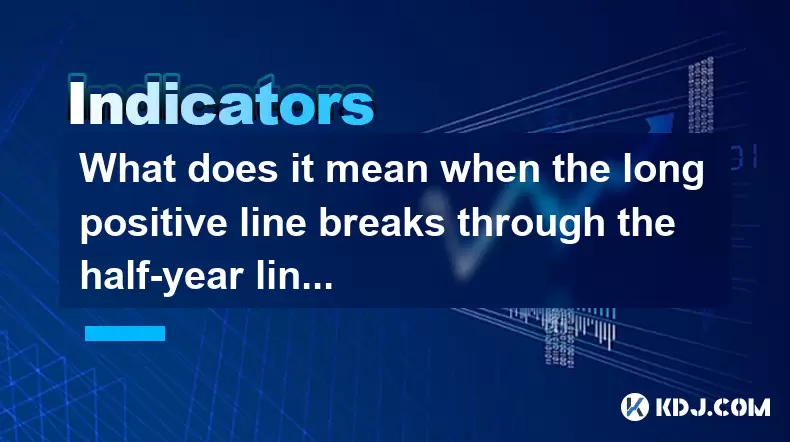
What does it mean when the long positive line breaks through the half-year line and then steps back?
Jul 25,2025 at 06:49pm
Understanding the Long Positive Line in Candlestick ChartsIn the world of cryptocurrency trading, candlestick patterns play a vital role in technical ...
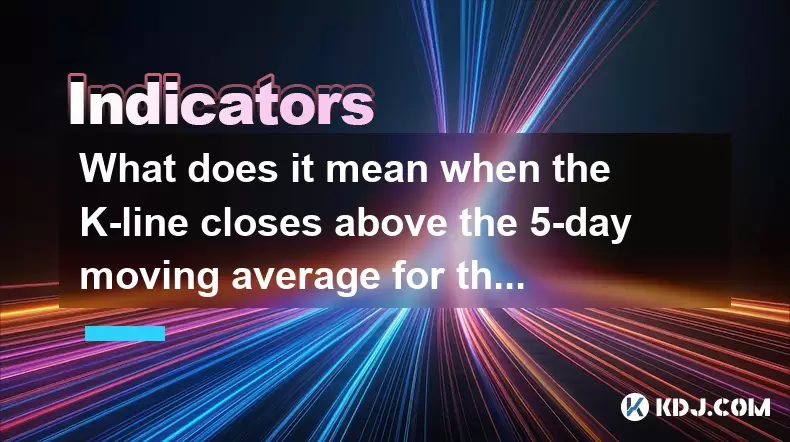
What does it mean when the K-line closes above the 5-day moving average for three consecutive days?
Jul 25,2025 at 10:07pm
Understanding the K-line and 5-day Moving AverageThe K-line, also known as a candlestick, is a critical charting tool used in technical analysis to re...
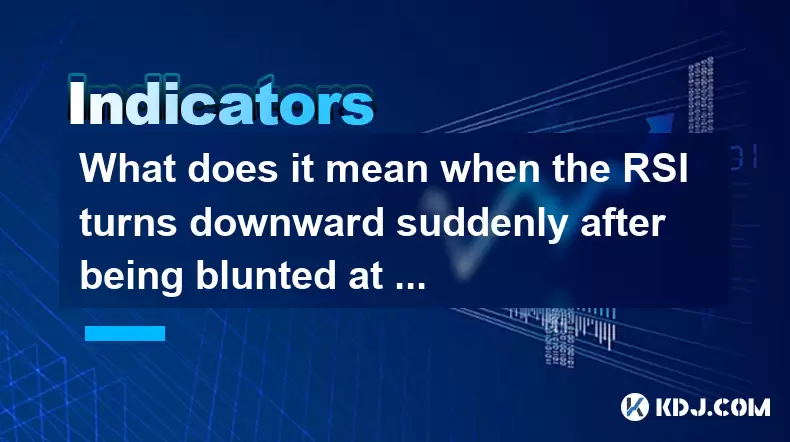
What does it mean when the RSI turns downward suddenly after being blunted at a high level?
Jul 25,2025 at 04:00pm
Understanding the RSI and Its Role in Technical AnalysisThe Relative Strength Index (RSI) is a momentum oscillator that measures the speed and change ...
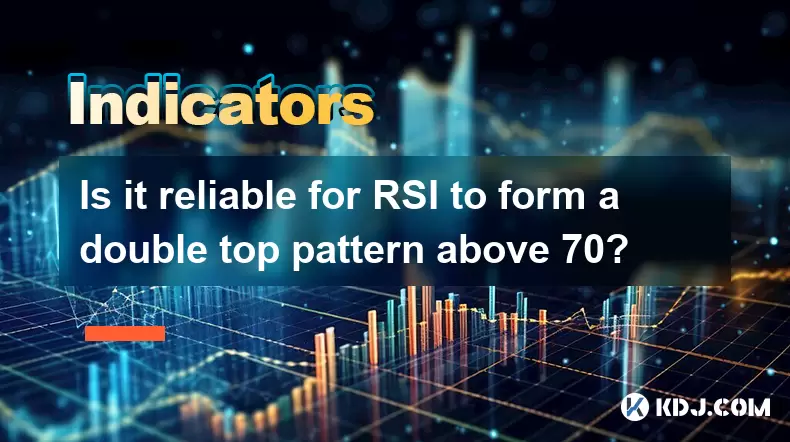
Is it reliable for RSI to form a double top pattern above 70?
Jul 25,2025 at 04:49pm
Understanding the RSI Indicator and Its Role in Technical AnalysisThe Relative Strength Index (RSI) is a momentum oscillator that measures the speed a...

How to interpret that the KDJ D line is downward for a long time but the price is sideways?
Jul 25,2025 at 07:00pm
Understanding the KDJ Indicator and Its ComponentsThe KDJ indicator is a momentum oscillator widely used in cryptocurrency trading to assess overbough...

What does it mean that the KDJ indicator forms a double bottom at a low level?
Jul 25,2025 at 05:08pm
Understanding the KDJ Indicator in Cryptocurrency TradingThe KDJ indicator is a momentum oscillator widely used in cryptocurrency trading to identify ...

What does it mean when the long positive line breaks through the half-year line and then steps back?
Jul 25,2025 at 06:49pm
Understanding the Long Positive Line in Candlestick ChartsIn the world of cryptocurrency trading, candlestick patterns play a vital role in technical ...

What does it mean when the K-line closes above the 5-day moving average for three consecutive days?
Jul 25,2025 at 10:07pm
Understanding the K-line and 5-day Moving AverageThe K-line, also known as a candlestick, is a critical charting tool used in technical analysis to re...

What does it mean when the RSI turns downward suddenly after being blunted at a high level?
Jul 25,2025 at 04:00pm
Understanding the RSI and Its Role in Technical AnalysisThe Relative Strength Index (RSI) is a momentum oscillator that measures the speed and change ...

Is it reliable for RSI to form a double top pattern above 70?
Jul 25,2025 at 04:49pm
Understanding the RSI Indicator and Its Role in Technical AnalysisThe Relative Strength Index (RSI) is a momentum oscillator that measures the speed a...
See all articles

























































































